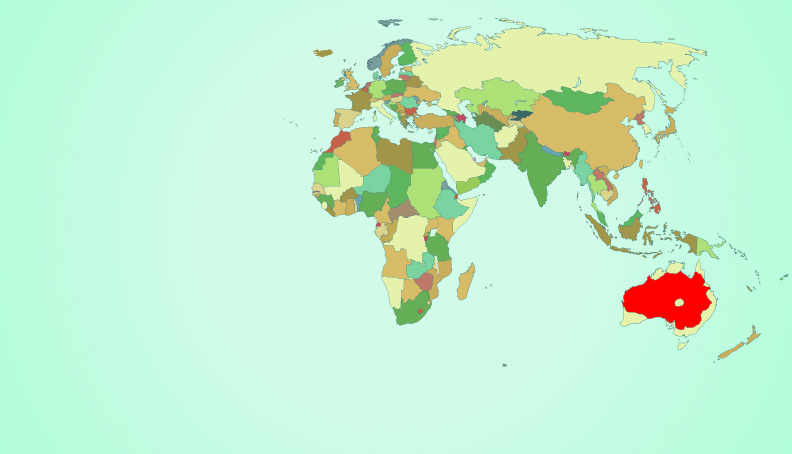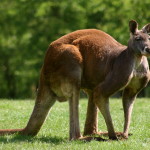Red Kangaroo
Macropus rufus
Habitat: This kangaroo occurs in arid and semi-arid habitats, in areas with 500 to 800 mm annual rainfall. It may be found in scrubland, grassland, woodland and desert, tending to prefer open grassy plains with scattered trees for shade and shelter.
Threats: Like all species kangaroos are threatened by the expansion of towns & cities and the spread of agriculture, although for the red little of its habitat has so far been affected by this some argue competition with livestock and introduced rabbits, particularly during drought conditions, could present a threat.
Breeding: Kangaroos are marsupials, animals of which the female has a pouch where she keeps the young. These are the largest and most muscular macropod marsupials. A large male may stand as tall as a man and weigh 85 kg. The males can grow to more than 2.7 metres from head to tail. The females are smaller. Most male kangaroos are pale to brick red in colour, while females are usually blue-grey. It has a thick woolly coat which helps keep out both heat and cold.
Food: The kangaroos are plant eaters. They have good chewing teeth in the back of the mouth. As with elephants, their teeth move forwards as they grow older and the front teeth wear down. Kangaroos have large stomachs where they are bacteria, which help break down the tough plant food.
Information: A male ‘’Big Red’’ has been timed at 56 km/h for 1.6 km. A leap of 12.8 metres has been recorded and a high jump of 3.1 metres. When walking slowly, kangaroos may use the front legs and tail as a tripod to take the weight, and then they swing their back legs forward. Next the back legs support them while they move their front legs and tail. The long tail works as a counterbalance to the weight of the body as they jump. Kangaroos live in groups called ‘’mobs’’.
The red kangaroo is distributed throughout the arid regions of mainland Australia, excluding the extreme north, east coast, and extreme southwest of the country.
Map: Red = Locations Found 822





